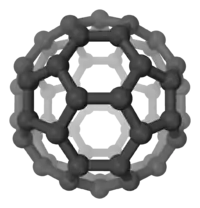Aminoacetonitrile
Aminoacetonitrile is the organic compound with the formula NCCH2NH2. The compound is a colorless liquid. It is unstable at room temperature, owing to the incompatibility of the amine nucleophile and the nitrile electrophile. For this reason it is usually encountered as the chloride and bisulfate salts of the ammonium derivative, i.e., [NCCH2NH3]+Cl− and [NCCH2NH3]+HSO4−.[3]
| |||
| |||
| Names | |||
|---|---|---|---|
| IUPAC names | |||
| Other names
2-Aminoacetonitrile | |||
| Identifiers | |||
3D model (JSmol) |
|||
| ChemSpider | |||
| ECHA InfoCard | 100.007.957 | ||
| EC Number |
| ||
| MeSH | Aminoacetonitrile | ||
PubChem CID |
|||
| RTECS number |
| ||
| UNII | |||
CompTox Dashboard (EPA) |
|||
| |||
| |||
| Properties | |||
| C2H4N2 | |||
| Molar mass | 56.068 g·mol−1 | ||
| Appearance | Colourless liquid | ||
| Boiling point | 15 °C (59 °F; 288 K) at 15 mm/Hg | ||
| Acidity (pKa) | 5.34 (conjugate acid; H2O)[2] | ||
| Hazards | |||
| GHS pictograms |   | ||
| GHS Signal word | Warning | ||
| H302, H312, H332, H351 | |||
| P280 | |||
| Related compounds | |||
Related alkanenitriles |
|||
Related compounds |
DBNPA | ||
Except where otherwise noted, data are given for materials in their standard state (at 25 °C [77 °F], 100 kPa). | |||
| Infobox references | |||
Production and applications
Industrially aminoacetonitrile is produced from glycolonitrile by reaction with ammonia:
- HOCH2CN + NH3 → H2NCH2CN + H2O
The aminoacetonitrile can be hydrolysed to give glycine:[4] Being bifunctional, it is useful in the synthesis of diverse nitrogen-containing heterocycles.[3]
Aminoacetonitrile derivatives are useful antihelmintics. They act as nematode specific ACh agonists[5] causing a spastic paralysis and rapid expulsion from the host.
Occurrence in the interstellar medium
Using radio astronomy, aminoacetonitrile was discovered in the Large Molecule Heimat, a giant gas cloud near the galactic center in the constellation Sagittarius.[6] This discovery is significant to the debate on whether glycine exists widely in the universe.
References
- Nomenclature of Organic Chemistry : IUPAC Recommendations and Preferred Names 2013 (Blue Book). Cambridge: The Royal Society of Chemistry. 2014. pp. 903, 1408. doi:10.1039/9781849733069-FP001. ISBN 978-0-85404-182-4.
- Haynes, William M., ed. (2016). CRC Handbook of Chemistry and Physics (97th ed.). CRC Press. pp. 5–88. ISBN 978-1498754286.
- Tauber, Johannes; Opatz, Till (2015). "2-Aminoacetonitrile". E-EROS Encyclopedia of Reagents for Organic Synthesis: 1–4. doi:10.1002/047084289X.rn01752. ISBN 9780470842898.
- Pollak, Peter; Romeder, Gérard; Hagedorn, Ferdinand; Gelbke, Heinz-Peter (2002). "Nitriles". Ullmann's Encyclopedia of Industrial Chemistry. Weinheim: Wiley-VCH. doi:10.1002/14356007.a17_363.
- Kaminsky, R.; Ducray, P.; Jung, M.; Clover, R.; Rufener, L.; Bouvier, J.; Weber, S. S.; Wenger, A.; Wieland-Berghausen, S.; et al. (2008). "A new class of anthelmintics effective against drug-resistant nematodes". Nature. 452 (7184): 176–180. Bibcode:2008Natur.452..176K. doi:10.1038/nature06722. PMID 18337814. S2CID 4428834.
- Belloche, A.; Menten, K. M.; Comito, C.; Müller, H. S. P.; Schilke, P.; Ott, J.; Thorwirth, S.; Hieret, C. (2008). "Detection of amino acetonitrile in Sgr B2(N)" (PDF). Astronomy and Astrophysics. 482 (1): 179–196. arXiv:0801.3219. Bibcode:2008A&A...482..179B. doi:10.1051/0004-6361:20079203. S2CID 21809828.
External links
- Property data at the National Institute of Standards and Technology (NIST)



